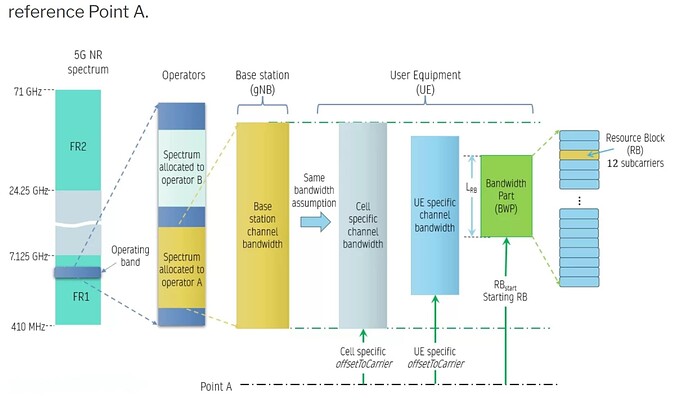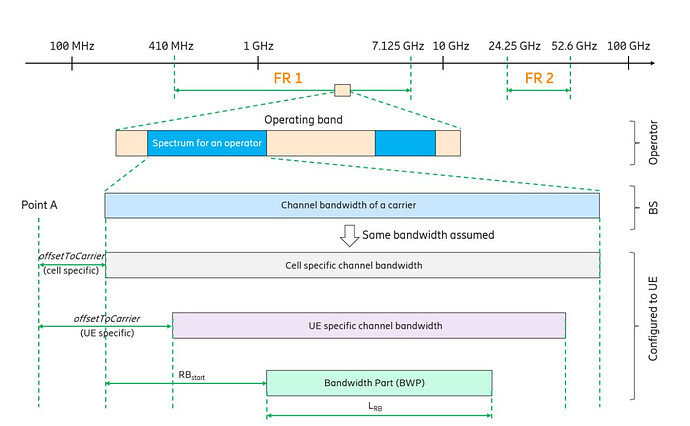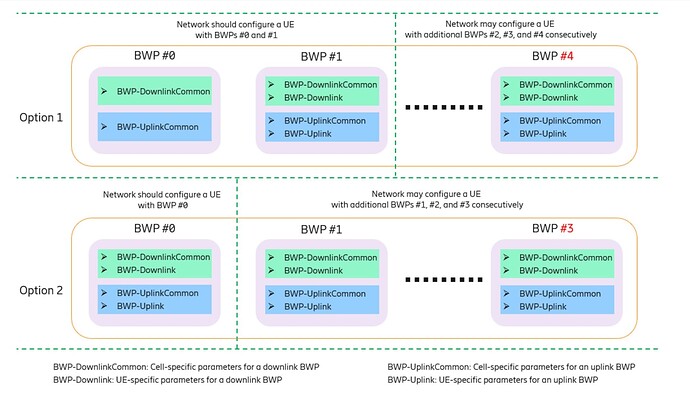With the arrival of 5G, we’ve seen a big leap in network capabilities, especially in terms of bandwidth. While 4G/LTE can handle up to 20MHz of bandwidth, 5G can go up to 400MHz per carrier. However, not all devices, known as User Equipment (UE), can use such large bandwidths efficiently. To solve this problem, 5G introduces Bandwidth Parts (BWP).
-
What is BWP?
- A BWP is a smaller section of the total available bandwidth within a 5G carrier. Instead of making devices use the entire bandwidth, which can be inefficient and drain battery power, the network can assign a specific BWP to a device based on what it needs at that moment. This makes the network more efficient and helps save power.
-
How do BWPs work?
- Configuration via RRC Signaling: Networks configure multiple BWPs for both downloading (downlink) and uploading (uplink) using Radio Resource Control (RRC) messages.
- Single Active BWP: Although up to four BWPs can be set up, only one is active at a time. The network switches BWPs based on the UE’s current needs, such as high data rates or power saving.
- Dynamic Switching: BWPs can switch automatically using timers, network commands, or specific control signals (Downlink Control Information or DCI).
-
Benefits of BWP
- Power Efficiency: Reduces battery consumption by allowing UEs to operate on narrower bandwidths when full capacity isn’t needed.
- Optimized Resource Use: Ensures that network resources are allocated efficiently based on service demands, like streaming video or online gaming.
-
Technical Details and Use Cases
-
Multiple BWPs: Devices can be configured with up to four BWPs for downloading and uploading, but only one can be active at any time. Switching between BWPs is controlled by the network and can happen automatically based on device activity or network commands.
-
BWP Switching: The network uses special control signals, called Downlink Control Information (DCI), to manage when and how BWPs are switched. These signals include an indicator that tells the device which BWP to activate.
-
-
Practical Examples
- Low-Bandwidth Devices: A simple device may use a narrow BWP to conserve power.
- Variable Data Needs: A smartphone might switch to a wider BWP for video streaming and revert to a narrower one for browsing.
- Different Services: Supports diverse applications by adjusting bandwidth according to real-time requirements.
-
Why BWP is Important?
- BWPs enhance 5G’s flexibility and efficiency, ensuring that devices use just the right amount of bandwidth. This leads to better battery life for users and more effective use of the network’s resources.
Note: Point A indicates a common reference point for resource block grids and is obtained from broadcast, so located in the center of subcarrier number 0 in CRB number 0 in each RG
That’s it.
Linkedin: ![]()


